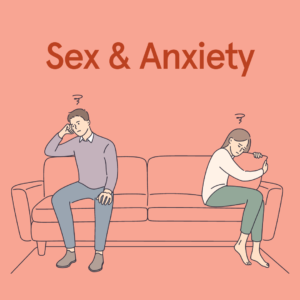What would you think if you had a phobia about something (example: a fear of flying) and you could overcome your fear just by sitting in your therapist’s office and watching a movie? We think you’d sign up for that! Okay, it’s not entirely that simple (although it almost is), but virtual reality therapy for phobias is now giving patients a high-tech, cutting-edge solution for helping them get past their fears so they can live a better life.
How Does Virtual Reality Exposure Therapy Work?
Many types of phobias can be overcome or greatly reduced when the sufferer goes through cognitive behavioral therapy. In this type of therapy, a patient learns to recognize the thoughts causing the negative feelings surrounding their fears. Once these thoughts are identified, the patient learns how to replace those undesirable beliefs with more positive ones. In-vivo exposure therapy goes hand in hand with cognitive behavioral therapy. With in-vivo exposure, the patient experiences what they fear in a controlled way and in small doses. By taking small steps, they can confront and gradually conquer their phobia. Virtual reality exposure therapy combines the best of cognitive behavior therapy and in-vivo exposure. It allows people to work through their fears in a realistic environment without actually leaving the comfort and safety of their therapist’s office.Virtual Reality Therapy
In the case of the fear of flying phobia mentioned above, a patient comes to our office, sits in a comfortable chair, and puts on a pair of virtual reality therapy goggles. In conjunction with coaching from their therapist, they view a simulation of the inside of an airplane’s passenger compartment and can look around to see all aspects of the interior. The patient not only sees the plane, they also hear the same sounds they would experience if they were really on a flight, such as the flight attendant’s announcement or the rumble of airplane engines. Additionally, our virtual reality therapy chair vibrates with the motion of the plane “taking off” or “flying” to provide an even more convincing simulation. Even if a person knows the virtual reality program isn’t completely realistic, there is enough realism in it to trigger their emotional responses to their phobia. And, by working through these reactions, in some types of phobias or traumas, nearly 83 percent of people who have tried virtual reality therapy have managed to put their fears behind them.Virtual Reality Therapy Benefits
Some of the benefits of virtual reality therapy include:- Allowing the patient to try the therapy without as much anxiety. For example: in the case of a phobia about flying, it is much easier for someone to agree to try working through their fears in an office than to have to force themselves to physically go to the place they know will bring an emotional reaction.
- Experiencing the phobia and/or its triggers without taking the time to travel to an actual location. For the fear of flying phobia, you simply sit in a chair, rather than going to the airport numerous times for several small exposures to your triggers.
- Confidentiality for the patient: you don’t have to face potential embarrassment by running into someone you know or possibly becoming upset in a public area.
- The therapist can carefully control the situation, meaning if you are afraid of elevators or airplanes, you don’t have to get in one. Virtual reality exposure therapy allows you to feel as if you are in a location, but the therapist can stop the program if you become truly upset.
- The therapy is more realistic, in that you can go places or experience things you wouldn’t ordinarily be able to (you can’t get on and off an airplane as part of your flying phobia therapy, for instance). That being said, it is much safer than the real-life setting and minimizes any risk involved.
- Virtual reality exposure therapy sessions are shorter than those that require you to visit an actual site for therapy (so, there is no travel time from the therapist’s office to the airport for our fear of flying scenario.)
- Sessions can be repeated several times until the patient has conquered that portion of their phobia and is ready to move on to another phase.
Do You Have Questions About Virtual Reality Therapy?
Virtual Reality Therapy is coming to our practice very soon. For more information or to find out when it becomes available, contact The Center for Treatment of Anxiety and Mood Disorders in Delray Beach, Florida or call us today at 561-496-1094. SaveDr. Andrew Rosen
Dr. Andrew Rosen PHD, ABPP, FAACP is a Board-Certified Psychologist and the Founder and Director of The Center for Treatment of Anxiety and Mood Disorders, as well as, the Founder of The Children’s Center for Psychiatry Psychology and Related Services.





